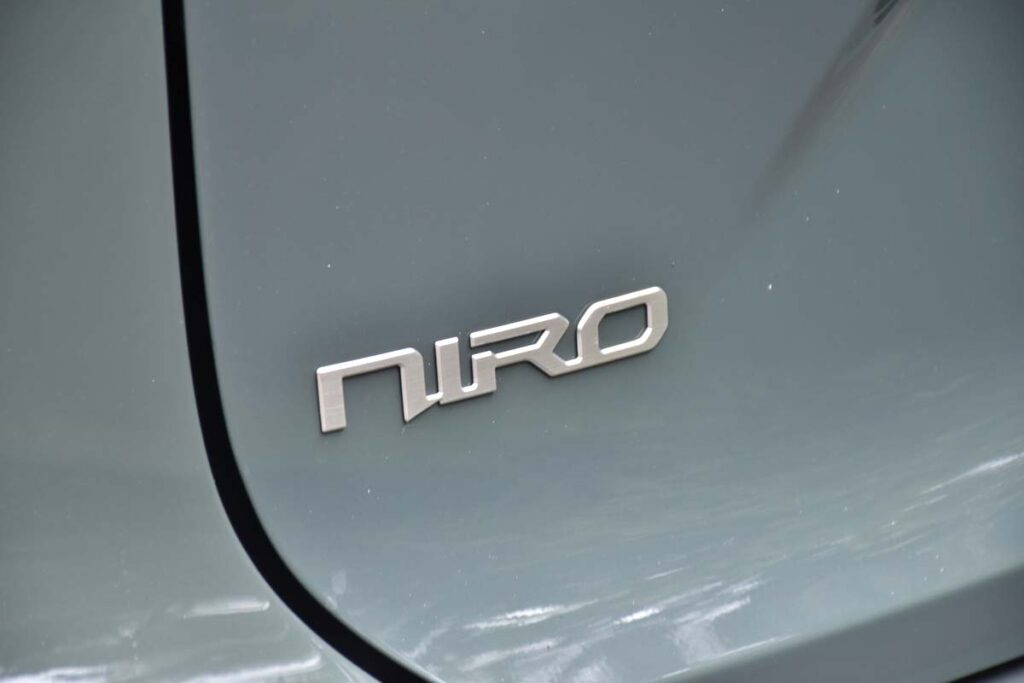2022 Kia Niro Hybrid review: Practical, stylish, and surprisingly quite posh


Crossover SUVs are a big thing everywhere right now, and while cars like the Honda HR-V and Hyundai Tucson are still riding on a bit of hype carried over from the success of the generation before, Kia has been steadily making inroads with its range as well and the new Kia Niro Hybrid is a car that seems tailor-made for Singapore.

It's a model that was first revealed in early 2022, and replaces the last one which dates back to 2019, which at the time of its launch was the cheapest Category A COE hybrid car you could buy.
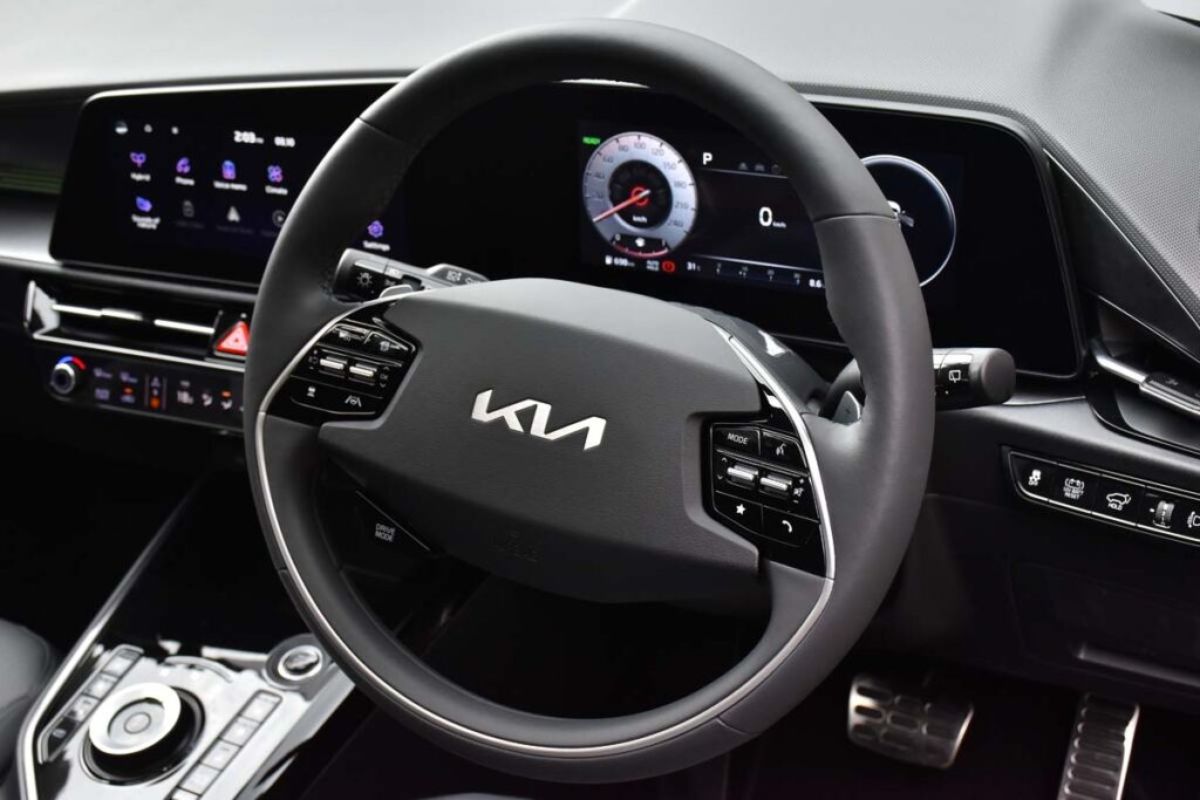
The basics of the Kia Niro is that it's a small crossover SUV, front-wheel driven and powered by a 1.6-litre petrol engine and electric motor combo. It's got entirely new bodywork, features the new Kia logo and front 'face'. It's promoted as a car that's comfortable for the family, and also a huge step forwards in refinement over the old car.

While the small Kia Stonic always seemed a bit underwhelming, the Niro Hybrid might very well be the total opposite.
The Kia Niro Hybrid is sold in Singapore in two trim variants, the basic EX and more premium SX version. Thankfully, the now outdated idea of stacking plastic bolt-ons to the product to make a car appear more expensive and 'aggressive' than it really is, is now firmly in the rearview mirror.

The external differences between EX and SX, are not major, but a lot of the $15k price difference between the two is down to standard equipment fitted in the cabin. The car seen here is the Niro Hybrid SX, and externally it differs from the EX with its LED lights, roof rails, and sunroof.

The interior is where it's all at, and the Niro Hybrid SX features a very contemporary flat panel, full-width video screen and a rotary drive mode selector. It's not quite the gigantic hyperscreen of the Mercedes-AMG EQS 53, but it does feel pretty spiffy. Actually, the Niro shares some components with the Hyundai Avante, and despite the different window dressing the controls and touchscreens do operate very similarly to present-gen Hyundais.
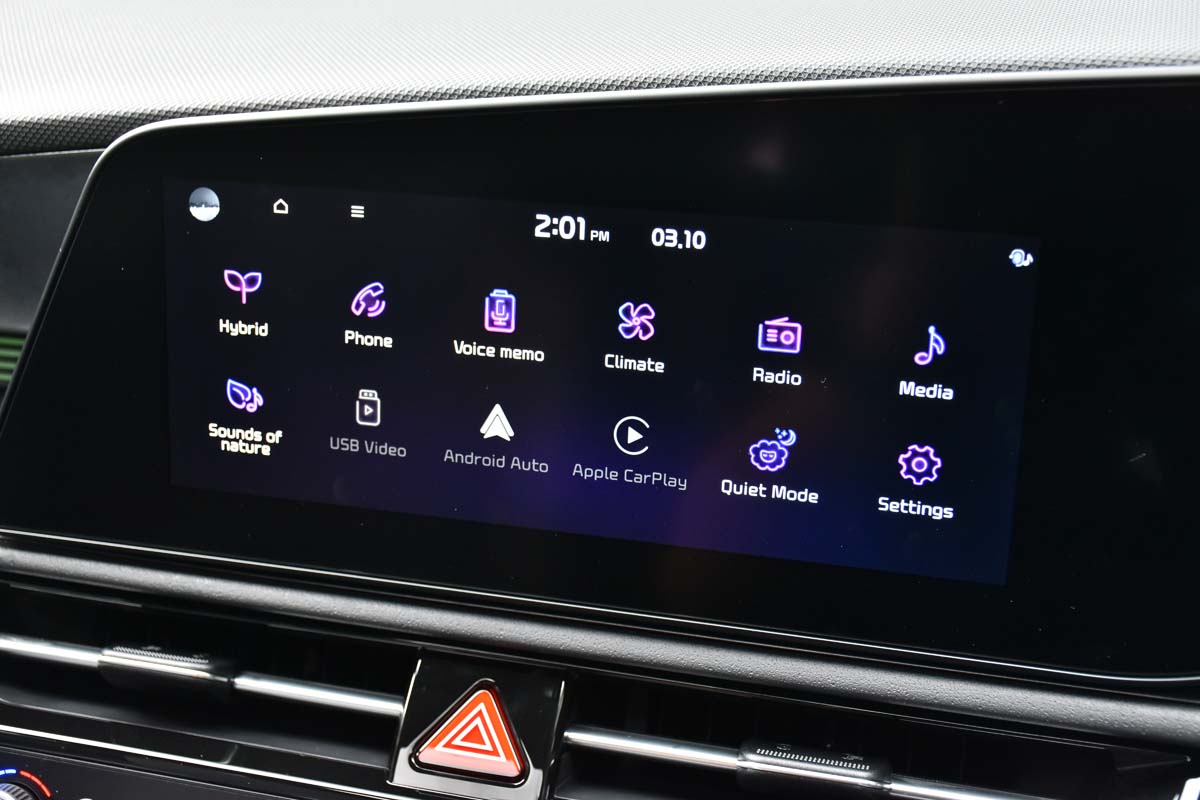
Ambient lighting, ventilated front seats, aluminium sports pedals, adaptive cruise control, rear air-con vents and dual zone climate control top off the SX variant.

The central control strip does the magic trick where it toggles between the climate control settings panel and the''other features' mode. A marked icon changes the touch surface between the two modes, and new users may find it mystifying to find no volume control in the car, until you discover that the temperature dial doubles as the volume dial as you flip modes.

It sounds a bit complicated, but it's really quick to get used to.
All round space in the cabin is pretty good, and the width of the second row is much better than many of its direct rivals. The glossy black plastics scattered around the dashboard can be a problem in bright sunlight however, reflecting the glare of the sun around the cabin.

The knock-on result is that the Niro Hybrid does look like a very wide car from the outside, with the squared off rear section looking especially chunky. It does have decently good aerodynamic efficiency however, with a unique C-pillar fin channelling air smoothly over the rear window to reduce air turbulence in the car's wake. It's a clever bit of design, and this type of air channelling used to be strictly the domain of supercars and luxury cars.

The car's front end and side view isn't exceptionally different from the rest of Kia's present lineup like the big Sorento Hybrid, and that's a good thing as there's a strong family connection running across the brand's crossover SUVs big and small.

Thanks to the archaic classification system with Singapore's COE system, the Kia Niro Hybrid appears to have been slightly detuned for sale in Singapore, which is a pretty common practice by dealers circumventing the Category A and Category B classifications. The Australian-specification Niro Hybrid makes a total power output of 139 horsepower, while the Singapore-spec version is maxed out at 130 horsepower.
ALSO READ: Cat A-friendly 2023 Toyota Sienta Hybrid launches in Singapore
That's because 130hp is the power cap for selling a car in the Category A COE segment, supposedly meant only for small and basic cars. However local auto dealers have learnt how to game the system a long time ago. The BMW 216i Gran Coupe and Audi A3 are both 'Singapore luxury specials', detuned to slip into the Cat A COE here, and perversely, they fight for the same COE as a basic Mitsubishi Attrage.
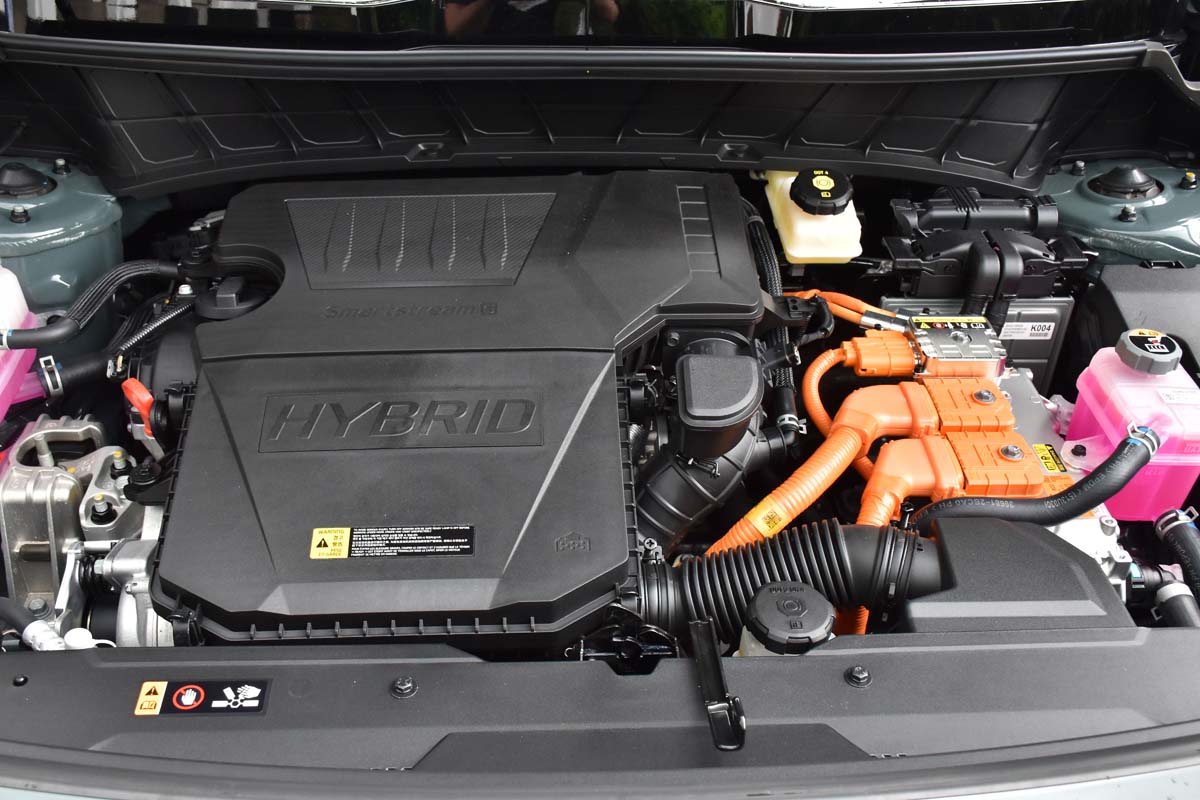
As for the Niro Hybrid, losing nine horsepower over its Australian counterpart isn't much of a loss thankfully, as the full petrol-electric hybrid drive experience makes for a decently punchy drive.

The full digital dashboard switches between various displays as is pretty much standard these days, and the steering wheel's paddle shifters are used to set the battery regeneration strength when in standard drive mode. There are three levels of regenerative braking, increased by pulling the '-' paddle on the left side. It feels like increased engine braking from the driver's seat as the strength is increased, and there’s also an auto regenerative braking mode, which is accessed by holding down the '+' paddle on the right side for more than one second.

In this mode, the car uses its sensors and cameras to detect if there is a car slowing down ahead of it, and automatically increases the 'engine braking' seamlessly, and as necessary. It's actually very smooth in this mode too and very driveable.

It's not a sports car, but the ride is neither soft and wallowy, nor choppy, which was a characteristic of the Renault Captur. The academic 0 to 100km/h sprint time of 10.5 seconds doesn't really tell the whole story as the car really doesn't feel slow at all. It has a decently gutsy midrange punch when the electric motor and engine combine to accelerate for overtaking. It will manage corners confidently as long as you don't throw the car in at sports car speeds and expect it to stick.
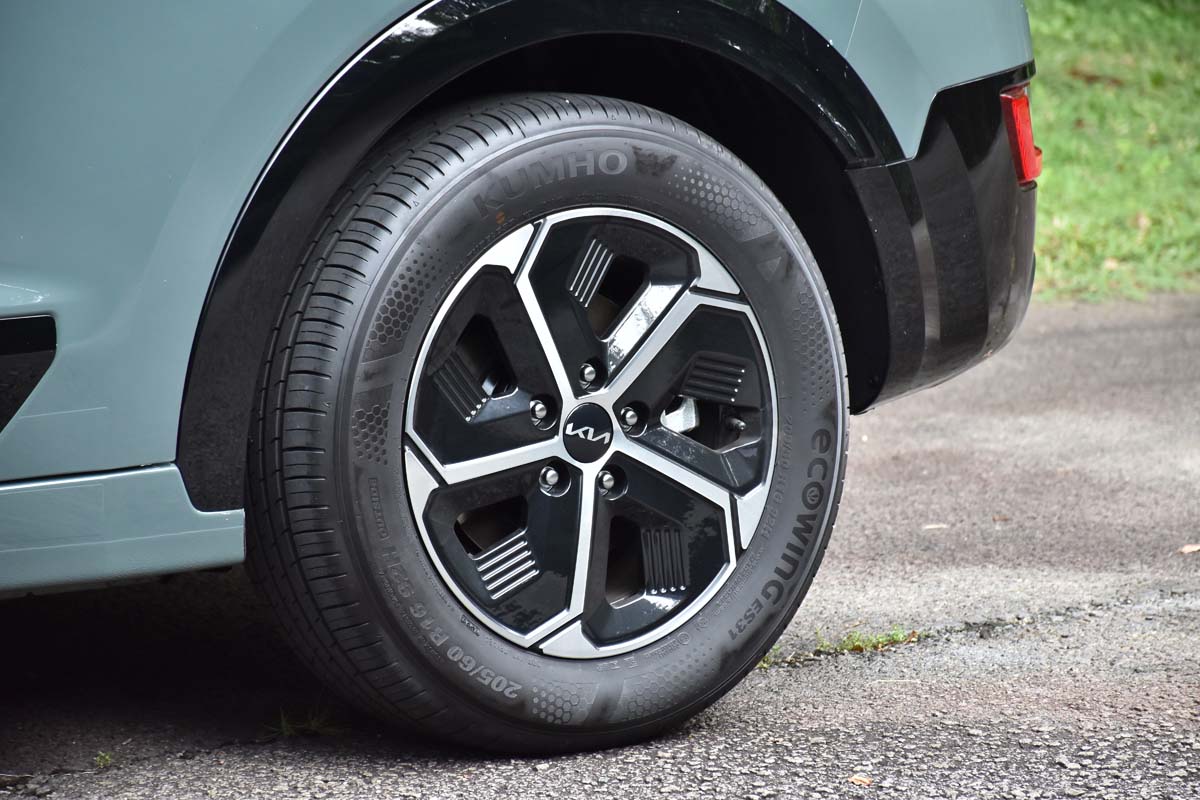
Also, the 16-inch wheels may not look all fierce and aggro like some other cars in this class, but the extra tyre to wheel height ratio makes for a smoother ride as the extra rubber absorbs small bumps better. Niro Note: The new car has full alloy wheels, unlike the previous car which had plastic covers on its steel wheels.
When fully packed with five occupants it definitely feels weighty, but with up to three adults in the car it is still a spritely drive.

With a single 24-hour drive we recorded an average fuel economy of 4.5l/100km, not far off the official stat, but Kia engines are known to become smoother over time and the test car is brand new, so in theory, the fuel economy will get better as the engine beds in.
The launch price may seem on the high side, but it's mostly COE money. The SX variant here is very well-equipped with standard features that you will typically only find on a more expensive car.

It's also very well put together with great attention to detail. For example, we found that the car has a single button activated Quiet Mode, which shuts off the speakers at the back seats and limits the audio system's volume to a set figure. It's a feature you never knew you needed, especially when you have a sleeping toddler or baby in the back seat.

A Hyundai Kona Electric, or any of its other family relations in EV and hybrid forms are the obvious competitors but there's also the Toyota Yaris Cross Hybrid, still making a case for a solidly built, reliable hybrid. The Kia Niro Hybrid is slightly bigger though, and in both SX and EX trims also feel slightly posher. Then there's still the case of, is the SX version worth the extra $15k over the EX? It's a lot to add, but if you can afford to stretch for it, it's worth the extra outlay. That's because you are buying a lot of very useful additional features, rather than a thousand dollars or so for just another tacky bodykit and some 'sports wheels'.
